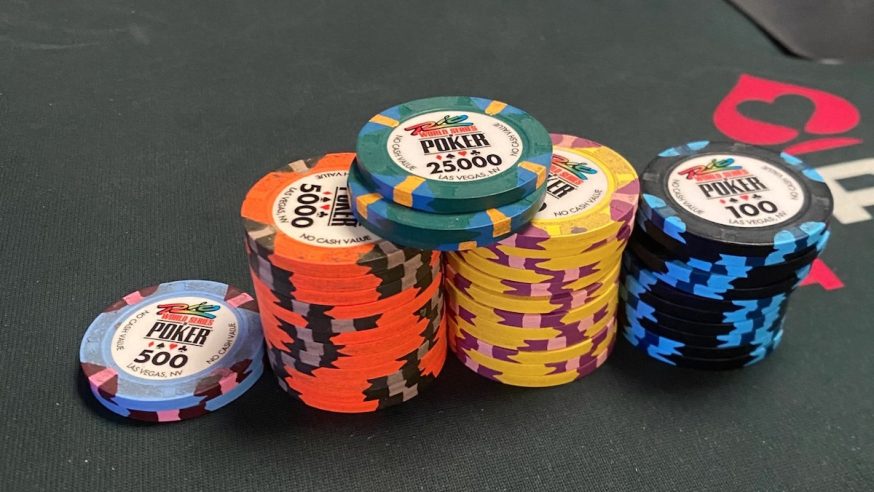When you’ve won six WSOP bracelets, countless millions and are the reigning PokerGO Tour Championship winner, what else is there…
Read MoreCommon Mistakes When Playing 3-Bet Pots (and How to Avoid Them)

When you’re playing poker, you live for winning 3-bet pots. It’s when the really big pots come together, and the dynamics or direction of a poker game can change. Three-bets put poker players into a different zone, a reframed state of mind that can lead to inspired plays or big mistakes.
Avoiding those mistakes can be what separates the decent players from the losing players. Every decision is magnified when there is more money in the pot and if you want to win the biggest pots, then you need to avoid making mistakes in three-bet pots.
In this article, we’ll tell you where you can go wrong, then how to dodge those dangerous spots where you lose value and, most importantly, chips. Whether you’re firing off 3-bets pre-flop, calling them on the flop, or defending against them on later streets, you need to know your stuff.
The Most Common Mistakes to Make in 3-Bet Pots
From noobs to novices, profitable players to elite pros, everyone finds themselves in situations where they want to avoid 3-bets or make them. Often, because of the jeopardy raising the stakes puts any player in, those mistakes can cost you a cash game session or your tournament stack.
1. C-Betting Too Aggressively Without Texture Awareness
Once the pot has been swelled to a 3-bet size, a very common mistake is when players then c-bet too aggressively as they were the initial raiser. The c-bet wasn’t even a thing in the 1970s when the World Series of Poker (WSOP) came along but half a century later, players can feel obliged to fire off a c-bet after seeing a flop if they were the initial aggressor in the hand.
In fact, in 3-bet pots, between 70-80% of players over c-bet the flop in 3-bet flops. This is especially common in late-street battles, such as the button against the big blind, where the 3-bet pot may well have been swelled by two players playing against each other’s perceived weaker ranges.
There are times to c-bet in 3-bet pots and often the manner of which is to bet more conservatively. One such hand played out as part of the Doug Polk vs. Daniel Negreanu heads-up match online where Polk, an online NLHE specialist, took Negreanu to the cleaners for over $1 million in a series that Kid Poker himself admitted afterwards that it improved his own heads-up game immeasurably.
In the pot, Polk’s king-queen flopped top pair as he hit his queen. On boards such as the one that landed, the optimal c-bet frequency is ~55%, so Polk did bet but kept it small, betting just 25% of the inflated pot. Negreanu called comparatively light, and Polk was then able to claim more value on later streets. If Polk had bet bigger on the flop, it would have hinted at a stronger hand, Negreanu may have folded, and Polk would have lost three streets of value. At the highest stakes, that’s a vast mistake.
2. Folding Marginal Equity Hands Too Often
While not being aggressive enough is a big leak when playing 3-bet pots, so too is being too passive. Many players will enter a 3-bet pot, then play too passively if they fail to hit a pair on the flop, falsely believing that playing defensively is better because there is more money in the pot to lose.
There’s also more in the pot to win, of course, and while a lot of players will muck hands with 25-30% equity, such as small pocket pairs and backdoor draws from the flop, those sorts of hands can realize up to 70-80% of that equity when up against players who over c-bet. If you fold, the money is always left on the table. Just remember, when you’re at pot odds of 2:1 against you, you only need around 33% equity to make that a logical call in the hand.
A good example of this is provided by the CardPlayer columnist Ed Miller, who once wrote about defending his blinds pretty wide with hands like a suite king-six to deny equity to his opponents. Over time, he would float flops against smaller c-bets, before sometimes turning his hand into a semi-bluff on the turn, leading to profit over thousands of hands in +EV spots.
3. Over-3-Betting Light vs Aggressive Regulars
If you’re ever appropriated the terrible advice of ‘fight fire with fire’ to your poker game, you’ll know exactly why it’s a bad idea. If you’re playing against aggressive players you often see in the same games, then 3-betting with hands such as ace-jack off or king-queen off can be a very risky move. You can end up in 4-bet pots or calling for your tournament life with dominated hands if aggressive players wake up with quality. For example, ace-jack has just 14% equity against pocket queens.
Instead, focus on which hands play well against these players and their ranges, with value hands like pocket jacks and ace-king joined by blocker bluffs like ace-five suited and above and king-jack suited and up.
A great example of this came in a PokerCoaching breakdown by poker great Matt Affleck. In the session, he shows how he tightened up against a 4-bettting opponent, keeping suited connectors and small suited aces as bluffs and letting go of middle-ranking offsuit hands that were costing him money. Over 10,000 hands, Affleck reported that his win-rate in 3-bet pots leapt from 1.5bb per 100 hands to 3.4 bb/100.
4. Ignoring Positional Edge
A fatal mistake in poker in general is failing to recognize your positional edge. If you missed the flop, that sucks, but your opponents don’t know that. Tossing away a natural advantage you have over your calling opponents makes no sense just because it’s a three-bet pot.
We were just talking about Affleck’s way of winning more big blinds per 100 hands. On average, position is worth just under 0.25 bb/hand in standard pots and this statistic hikes up even more in bloated 3-bet pots where each street compounds the edge. You simple cannot ignore your positional advantage in poker, but in 3-bet pots, that advantage is magnified. You can apply more pressure from late position c-bets without doing anything special simply because you have already invested more money in the pot.
5. Senseless Calling Without a Plan
I once asked the Danish poker tournament crusher when he comes up with a plan to play a hand. I was young, naïve and like many young reporters, I hadn’t considered the implications of the question. The answer that came from him is that he started the hand with a plan and through each action at the table and in new community cards being dealt, that plan needed to adapt and change.
Calling flop bets with no idea what you’ll do on the turn is folly in poker. This is common with hands like second pair or weak top pair in 3-bet pots. For this weakness, we’re heading to the solvers, which show that pure calls should be joined by continue or turn bluff plans. In other words, if you call, you should have a plan about what options are open to you on further streets and what your actions can and should lead to. Calling then folding when things don’t go your way on the turn is a sure-fire way to donate your chips in 3-bet pots, and sometimes it is better to fold right away on the flop if you think your hand could be in worse shape further down the line.
If you call without a plan, not only are you often simply donating the chips from that call to your opponent after the next street, but you’re giving away the control of the hand. The reverse is true; if you have a plan for what to do on each street and use all the information available to you in order to moderate that plan, you’ll be in better control of where your chips end up.
In Conclusion
Playing 3-bet pots may be much more lucrative, but they can magnify your leaks. If you’re throwing out risky c-bets without reason or even missing out on value by checking instead of betting, 3-bet pots will cost you more, both in chips at the time and in equity further down the line, because you’re inflating pots you then go on to lose.
Just as players such as Doug Polk and Matt Affleck have shown you in the examples in this article, tight-aggressive play can extend to 3-bet pots and if you know what you’re doing, then the fundamental skills you’ve built up, along with an avoidance of the common mistakes listed above can turn scary situations into opportunities for profit.
Next time you find yourself thinking of playing a 3-bet pot, remember these key points and rather than wandering blind into a hand that could cost you chips, you could make the most of the situation by relying on a strong knowledge base for one of the most pivotal parts of the game of poker.
